Contents
With the wide applications of IP cameras, VoIP phones, and an array of Ethernet-enabled devices, the power supply for Ethernet has become more and more important in modern networking setups. In addition, cable management can be more complex if you need to manage the Ethernet and power separately for multiple network devices. To address these challenges, PoE has been developed to eliminate the need for separate power cables for network devices, achieving an easier installation.
There are different types of PoE standards for network switches, and we will deeply explore PoE, PoE+, and PoE++ switches in this article to provide a comprehensive understanding of their functionalities and applications in daily use.
How Does PoE work?
A complete PoE system is composed of power sourcing equipment (PSE) and powered devices (PDs) to offer power and data through a single standard Ethernet cable. A PSE is a device designed to transfer power to PD over Ethernet; for example, a PoE switch is a common type of PSE. PD accepts power like access points (AP) and IP cameras.
There are three ways of transmitting power over Ethernet.
- Alternative A: In this mode, No. 1, 2, 3, and 6 pins are utilized to transfer both power and data for 1 Gbps or 10 Gbps network.
- Alternative B: In this mode, No. 1, 2, 3, and 6 pins are used to transfer data; while No. 4, 5, 7, 8 pins are used to transfer power. So it can be more accessible to troubleshoot network or electrical issues.
- 4PPoE: It is the abbreviation of “4 pair transmission PoE”, which means that four twisted pairs are used to deliver power.
Some people may need clarification about why PoE can support transmitting power and data through the same wires. PoE technology uses differential signaling to separate the power current and data signal.
Notes:
Active vs Passive PoE: Active PoE means that the device uses PoE IEEE 802.3 standards so that it can check the power to ensure safety; while passive PoE is a non-standard PoE, and you should make sure what PoE voltage your device require in advance to avoid device damage.
What is a PoE Switch?
A PoE switch is a regular network switch with the function of Power over Ethernet. It allows communication between different network devices over Ethernet and provides power over the same Ethernet cable and RJ45 connector. Using a PoE switch can help businesses and homeowners save time and money in installing electrical and Ethernet cables. There are different PoE switches according to different PoE standards, and do you know their performance, features, and applications?

PoE vs PoE+ vs PoE++ Switch
PoE Switch
PoE or Type 1 uses the IEEE 802.3af standard. A PoE switch can have a maximum port power of 15.4 W and support a voltage ranging from 44 to 57 V. The maximum power supported by powered devices is 12.95 W and their voltage is from 37 to 57 V. Generally, a PoE switch is used with Cat3 or Cat5 Ethernet cables.
PoE Switch Applications
- Basic Voice over Internet Protocol phones (VoIP phones)
- Wireless access points (WAPs) for small networks
- .....
PoE+ Switch
A PoE+ switch is an upgrade of the PoE switch and it is developed to the IEEE 802.3at standard. The PoE+ switch has a power of 30 W in each port and supports a voltage ranging from 50 to 57 V. 25.5 W is supported by powered devices under voltage from 42.5 to 57 V. Type 2 uses two twisted pairs to transfer data and power and the PoE+ switch is often used with Cat5 or higher category cables.
PoE+ Switch Applications
- VoIP phones
- Biometric sensors
- Zoom surveillance cameras
- Six-antenna WAPs
PoE++ Switch
PoE++ conforms to IEEE 802.3bt, and it can be divided into two types: Type 3 and Type 4. Type 3 switches have a maximum port power of 60 W and support voltage ranging from 50 to 57 V. Type 4 has up to 100 W power in each port and the port voltage ranges from 52 to 57 V. The maximum power of powered devices is 51 W for Type 3 and 71.3 W for Type 4. The voltage supported by PD is from 42.5 to 57 V for Type 3 and 41.1 to 57 V for Type 4. It is worth noting that Type 3 can use two or all twisted pairs to deliver data and power, and Type 4 uses 4-pair mode.
PoE++ Switch Applications
- Video conferencing systems
- Wi-Fi Access Points
- High-power devices like pan-tilt-zoom cameras
- Automation devices such as PLCs and sensors
- Remote monitoring devices
PoE vs. PoE+ vs. PoE++ Comparison Chart
|
|
PoE |
PoE+ |
PoE++ |
|
|
PoE Type |
Type 1 |
Type 2 |
Type 3 |
Type 4 |
|
IEEE Standard |
IEEE 802.3af |
IEEE 802.3at |
IEEE 802.3bt |
IEEE 802.3bt |
|
Max. Port Power (PSD) |
15.4 W |
30 W |
60 W |
100 W |
|
Voltage Range (PSD) |
44-57 V |
50-57 V |
50-57 V |
52-57 V |
|
Max. Power (PD) |
12.95 W |
25.5 W |
51 W |
71.3 W |
|
Voltage Range (PD) |
37-57 V |
42.5-57 V |
42.5-57 V |
41.1-57 V |
|
Supported Cabling |
Category 3 and Category 5 Cable |
Category 5 and higher category cables |
Category 5 and higher category cables |
Category 5 and higher category cables |
|
Supported Transmitting Mode |
Alternative A or B |
Alternative A or B |
Alternative A or B, 4-pair Mode |
4-pair Mode |
Common Questions About PoE and PoE Devices
Is PoE safe?
According to the working principle of PoE, PoE that complies with IEEE 802.3af/at/bt is safe.
What do RJ45 and SFP ports mean in a PoE switch?
Some PoE switches feature RJ45 and SFP ports. Do you know the differences between them? Actually, RJ45 port is the common Ethernet ports used to connect devices. SFP port is used to connect a fiber optic cable to a PoE switch as the fiber optic cable is generally not compatible with PoE devices.
Should I use copper twisted pairs between PoE devices?
Theoretically, Ethernet cables that ensure stable data transmission can be used with PoE devices. However, copper twisted pairs are more recommended for real-life PoE applications. Copper Clad Aluminum (CCA) cables may cause larger data loss and higher temperatures, affecting device durability and data quality.
Conclusion
PoE technology has been widely used as it can reduce installation costs, provide safety and flexibility. PoE switches have been upgraded from PoE to PoE+ and PoE++. Understanding differences among various standards and PoE switches can help you choose the best devices and accessories. We hope this article can give you a better understanding of PoE and PoE switches.
For more information on this topic, you can keep up on our blogs. While VCELINK offers general and basic information for our customers and other visitors to the website, it’s not professional advice.
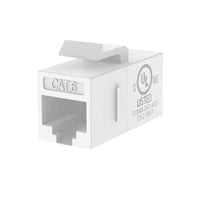
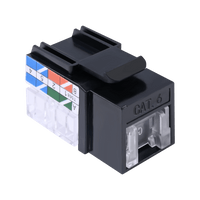
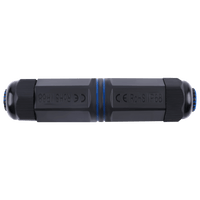
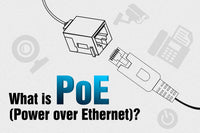
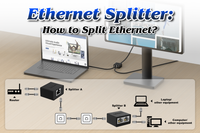
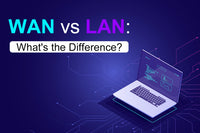
Be the first one to comment.
Leave a comment